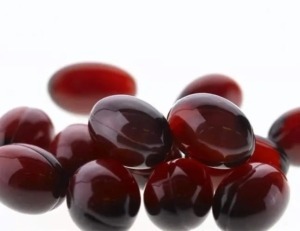Parkinson’s Disease(PD) is the second most common neurodegenerative disorder. It is age-related and is caused by oxidative stress and neuroinflammation. The global prevalence of PD is estimated to be 0.1–0.2%, which increases with age (>80 years old) up to 3%.
PD occurs mainly due to the motor and non-motor dysfunctional disorders, which are attributable to the loss of the dopaminergic neurons, the devastation of the non-dopaminergic ones, and the accumulation of the alpha-synuclein, which is the major component of Lewy bodies and plays a significant role in the development and progression of PD.
There is vital evidence that it affects the vagus nerve motor nucleus, the olfactory bulbs, the nucleus, the locus coeruleus, and thus, finally, the substantia nigra. Cortical regions of the brain at a later point are impaired. Damages to these particular neural structures result from numerous pathophysiological alterations that affect the engine system and neurological and neuropsychological systems.
Although many treatment modalities are currently approved for PD management, many adverse events have been associated, and therefore, many approaches have been made to discover novel multi-targeting modalities to treat PD properly. Numerous miRNAs have been recognized and suggested as key gene expression regulators in human cells in the last decade.
Almost all genes related to PD have been observed to be mediated by miRNAs, including alpha-synuclein (SNCA), LRRK2, and several transcription and growth factors. MiR-7 was found to influence the SNCA accumulation and engaged with the PD etiology. MiR-7 decreasing of the SN area was known as a therapeutic indicator of PD, involving SNCA accumulation and dopaminergic neuron loss and miR-7 replacement therapy.
Astaxanthin can decrease the previously induced stress in the endoplasmic reticulum by acting on the miR-7/SNCA axis to reduce the potential nerve damage that may be caused by PD. SNCA is the main gene that is usually responsible for developing and early initiation of PD.
During the initiation and development of multiple neurodegenerative disorders like PD, miRNAs are presented spatially and temporally, suggesting that miRNAs play a key role in PD pathogenesis. In vivo, scientists also found that astaxanthin has a potential protective effect against the neuron injury induced by 1-methyl-4-phenyl-1,2,3,6-tetrahydropyridine (MPTP) via a miR-7/SNCA axis.
On the other hand, the favorable events of astaxanthin were not reported in the animal study. The compound’s efficacy was limited in aged animals with PD as it could not counteract the toxicity of MPTP.
 However, they found that in both young and aged mice, the neuronal damage in the substantial nigra was prevented by astaxanthin. Therefore, they suggested that any PD clinical recommendations should consider aging an important factor.
However, they found that in both young and aged mice, the neuronal damage in the substantial nigra was prevented by astaxanthin. Therefore, they suggested that any PD clinical recommendations should consider aging an important factor.
Previous studies have investigated the potential effects of modified astaxanthin compounds on PD. These compounds include docosahexaenoic acid (DHA)-acylated astaxanthin ester and astaxanthin combined with the non-esterified astaxanthin and DHA.
Evidence shows that the first compound’s efficacy was significantly better than the latter in reducing the development of MPTP-induced PD in mice. DHA-Astaxanthin can dramatically reduce the progression of PD by reducing the apoptotic phenomena of the dopamine neurons by acting through the P38 MAPK and JNK pathway. Although the three astaxanthin-derived compounds showed favorable events in reducing oxidative stress, DHA-Astaxanthin was the only significant compound limiting PD progression by reducing cell apoptosis. A previous study also indicated astaxanthin’s ability to inhibit the mitogen-activated protein kinase and P13K/AKT activities, which might favor its actions on many neurological diseases, such as PD.
Moreover, it has been indicated that astaxanthin also has anti-oxidative stress that is attributable to MPP mechanisms in PC12 cells by acting through the NOX2/HO-1 and NR1/SP1 pathways. Previous studies indicated the favorable events of astaxanthin that showed that astaxanthin administration is associated with decreased reactive oxygen species synthesis, reduced mitochondrial dysfunction, and reduced cellular apoptosis.

Leave A Comment